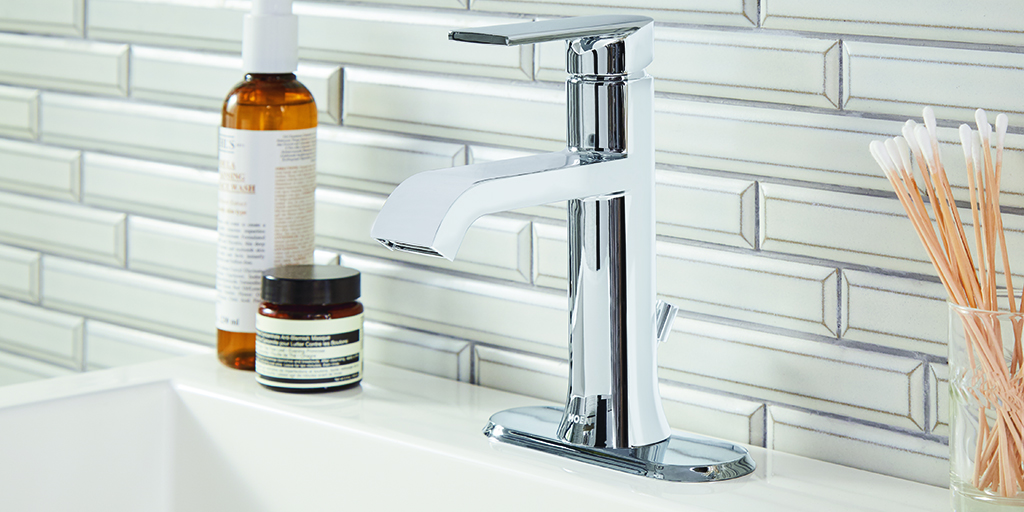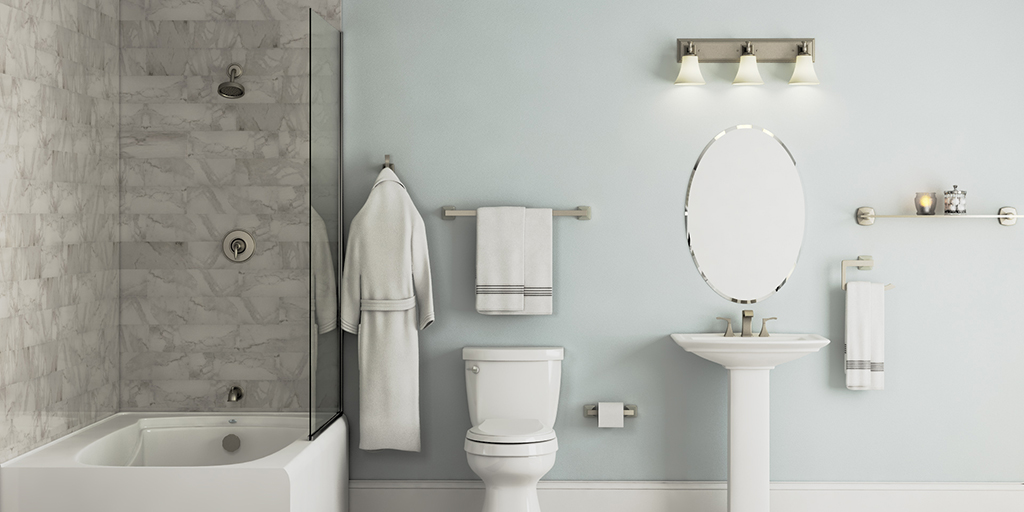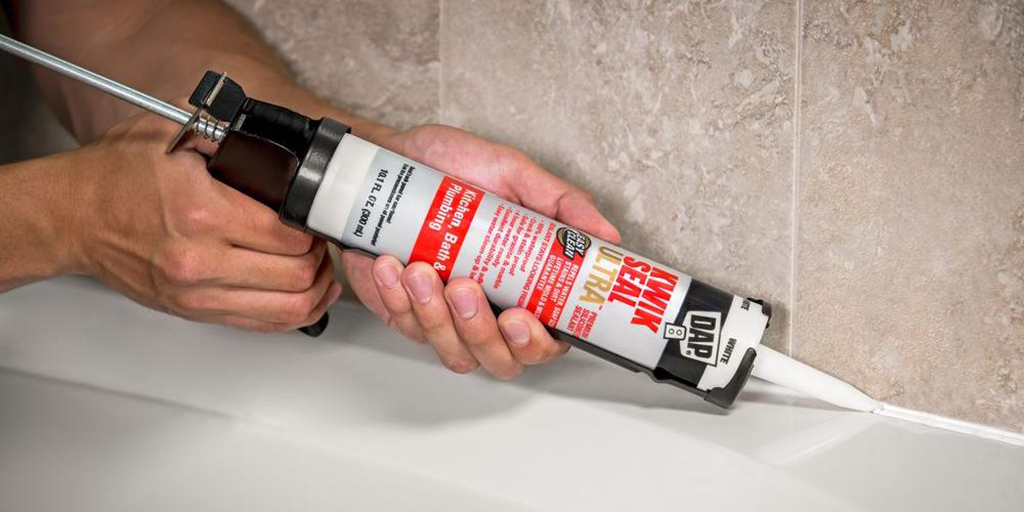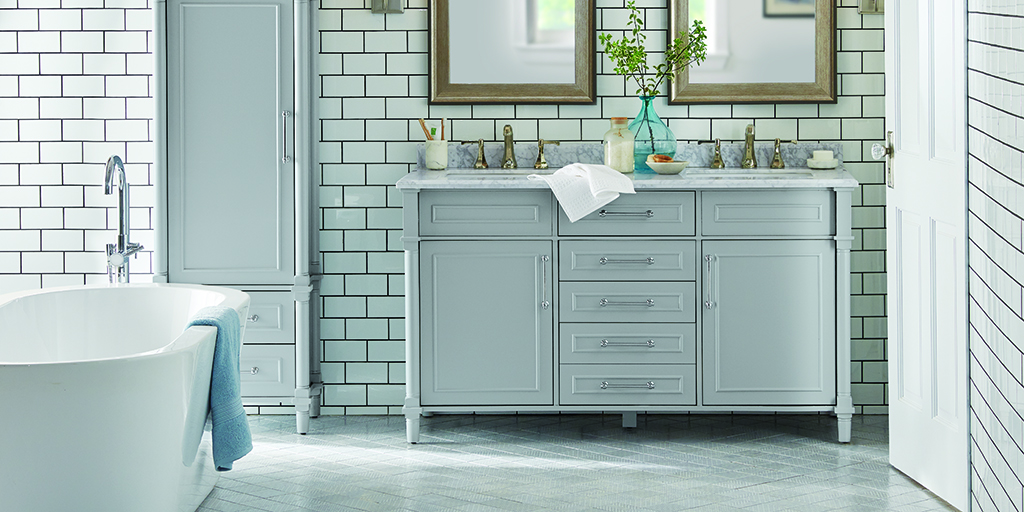For many of us, February weather keeps us inside our homes. Quality home time gives us the opportunity to take on interior renovations before flinging back open the doors to spring.
Bathrooms make for great February projects because you can choose from a range of jobs spanning from the quick and simple like linen swaps, to major undertakings like replacing tile.
Here are five bathroom projects big and small that will make the maximum impact in spring.

1. Fix up your fixtures
Many bathrooms are small, meaning little things can go a long way, especially if they match. Swapping out pieces like your sink faucet or shower head can change the feel of your bathroom. If you discuss with a Home Depot associate, you’ll soon see that it’s not as complicated as you think.
“We see a lot of people come in for those projects,” says Gina Ammerman, an associate from the Lakeland, Florida, Home Depot. “We’ve had people who were actually going to call a plumber just to change their faucet because they didn’t realize how easy it is until we explained it.”

2. Try new décor
If you’re happy with your fixtures but want to freshen up the look of your bathroom, consider purchasing new décor items. Take down your old towel bars, toilet paper holder and towel rings and replace them with a cohesive set that ties the room together – keep an eye out for icons on the in-store display to see which pieces go together. Purchase new linens to add a pop of color and compliment with counter-top accessories like a soap dispenser and toothbrush holder or a bold shower curtain set. If you’re up to it, add new trim around the room for a new-bathroom feel.
And, as long as you have the proper conditions, you can liven up even the bathroom with plants. Look for low-light, high humidity plants like Aloe Vera or a fern.
“I had a customer in a couple weeks ago who wants to sell his house and the last time it was updated was in the ‘80s,” Gina says. “He was in here to do the faucets, trim work on his shower, towel racks. He did all of that for a couple hundred bucks, and it makes a heck of a difference for a potential buyer.”

3. Eliminate any mold and mildew
It’s important to keep track of any invasive mold or mildew, especially in humid climates or households with hard water. Fortunately, the fixes are simple. Pay attention to any visible cracks forming and hit them with sealant or new grout— typically something you should do once a year.
A water softener helps decrease mineral build-up on your fixtures or shower doors. If minerals have already accumulated, you can clean with chemicals and a grouting sponge.
“If water deposits are wearing on your fixtures, they’ll depreciate a lot quicker,” says Home Depot store manager Dave Crowthers. “You’ll get water spots, and, if you don’t pay attention or clean them, you’ll end up ruining the finish.”

4. Vamp up your vanity
If you’re able to spend some more time and money, a new vanity can instantly change the entire look of your bathroom.
“We sell a lot of vanities in our store,” Gina says of her store. “The issue is not so much the vanity, but the plumbing. If customers try to redo that, they may need more help.”
One detail to be aware of in the process: your tile.
“Was your floor put down and then the vanity on top?” Dave asks. “Or was the vanity put down and someone installed the flooring around it? If so, when you go to change the vanity, you have that footprint, which means you now have to re-tile the entire floor.”

5. Take on new tile
The most impactful bathroom upgrade, re-tiling the room, takes time and know-how. With the right guidance and tools, you can learn how best to approach this project. In this case, the first step is usually the hardest.
“Tile installation is the easy part,” Dave says. “Tile removal is a whole other story.”
A vinyl floor can be ripped up easily, but removing old tile is more difficult. Either way, you’ll need to finalize your desired finished look in order to select the right tile and grout color.
Subway tile is a popular choice to create a clean and simple feel. Patterns like herringbone have also sold well—but with it comes extra work.
“The more intricate the look, the more difficult to install, the more cuts you’ll have to make and more precise you have to be,” Dave says. “We have clinics and classes in-store that can show you how it’s done.”
Ready to tackle one of these projects? Take a look at this how-to playlist:






